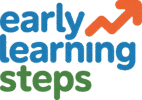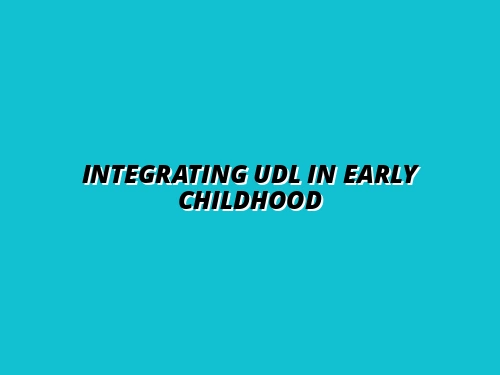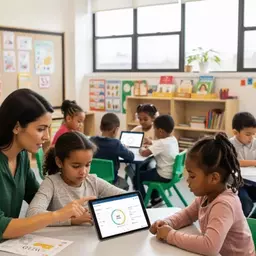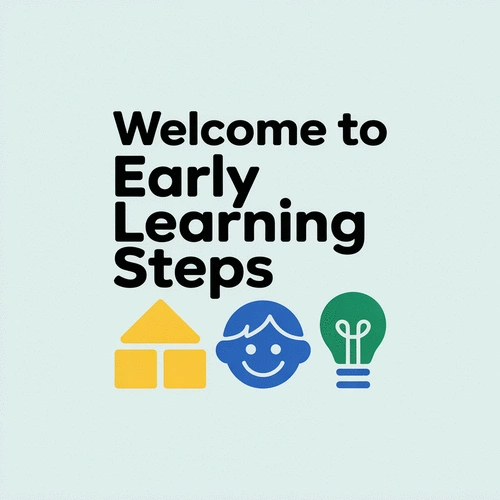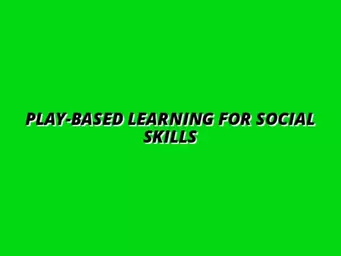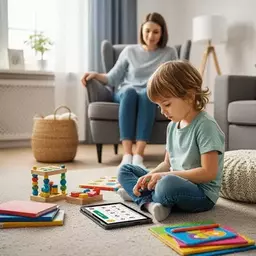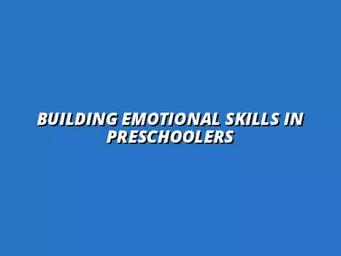Every child learns differently, and understanding these differences is the key to effective teaching. Universal Design for Learning (UDL) provides a framework that not only recognizes but celebrates these unique learning styles.
What You Will Learn
- Engagement: Learn how to motivate young learners through diverse options and activities.
- Representation: Discover ways to present information that caters to various learning styles.
- Expression: Understand the importance of allowing children to demonstrate their knowledge in multiple forms.
- Inclusivity: Explore how UDL fosters a sense of belonging and empowers all children to thrive.
- Collaboration: Learn the value of working with families to support children's diverse backgrounds and learning needs.
- Continuous Improvement: Identify steps to enhance your curriculum for inclusivity and effectiveness.
The UDL Framework: Three Core Principles for Inclusive Learning
Universal Design for Learning (UDL) guides educators in creating flexible learning experiences. It emphasizes three core principles, detailed below, to accommodate diverse needs and empower every child to thrive.
Principle 1 Engagement
Motivating learners through varied options, incorporating games and hands-on activities to stimulate interest.
Principle 2 Representation
Presenting information in diverse ways, using visual aids and real-life examples to ensure accessibility for all.
Principle 3 Expression
Allowing learners to demonstrate understanding in varied ways, enabling choice in how they display knowledge.
Understanding the Basics of Universal Design for Learning in Early Childhood
At Early Learning Steps, we believe that understanding Universal Design for Learning (UDL) is crucial for fostering an inclusive and effective educational environment for our young learners. UDL is a framework that guides educators in creating flexible learning experiences that accommodate the diverse needs of all students. By considering the varied ways children learn, we can design activities that not only engage but also empower every child to thrive.
As we explore UDL, it's essential to remember that learning differences are not obstacles; instead, they are opportunities for creativity and innovation. This perspective can greatly enhance our teaching practices and the learning journeys of our children!
What is Universal Design for Learning (UDL)?
Universal Design for Learning (UDL) is an educational framework that focuses on optimizing teaching methods to meet the diverse needs of all students. It encourages the development of flexible learning environments that can be customized to fit individual learning preferences and needs. UDL emphasizes three core principles: engagement, representation, and expression.
- Engagement: Motivating learners through various options.
- Representation: Providing diverse ways to present information.
- Expression: Allowing learners to demonstrate their understanding in different ways.
By applying these principles, educators can create a rich and supportive learning environment that nurtures curiosity and confidence in young learners.
The Importance of UDL in Early Childhood Education
Implementing UDL in early childhood education is vital for several reasons. First, it fosters a sense of belonging among all children, ensuring that everyone feels valued and included. Second, UDL helps to cultivate a love for learning by allowing children to explore subjects in ways that resonate with them. By promoting choice and flexibility, we empower our young learners to take charge of their educational experiences.
- Builds self-efficacy and confidence.
- Enhances creativity and critical thinking.
- Encourages positive relationships among peers.
As a passionate advocate for early childhood development, I often see how these benefits play out in real classrooms. When children feel included, their enthusiasm for learning shines through!
Core Principles of UDL: Engagement, Representation, and Expression
The core principles of UDL serve as a foundation for effective teaching practices in early childhood settings. Engagement focuses on how to stimulate learners' interest and motivation. Representation deals with the various ways information is presented, ensuring accessibility for all children.
- Engagement: Incorporate games and hands-on activities.
- Representation: Use visual aids and real-life examples.
- Expression: Allow students to choose how they display their knowledge.
When we integrate these principles into our curriculum, we not only support diverse learning preferences but also create a dynamic and inclusive classroom environment.
The Role of Learning Differences in Designing UDL
Learning differences play a significant role in shaping our UDL approach. By recognizing the unique strengths and challenges of each child, we can tailor our instructional strategies to best support their growth. This is where our understanding of emotional intelligence comes into play, as we learn to respond to the needs of our students with empathy and creativity.
- Identify individual learning strengths and challenges.
- Use ongoing assessments to inform instruction.
- Collaborate with families to understand children's backgrounds.
As we embrace diverse learning differences, we can foster an educational atmosphere where every child feels confident in their ability to learn and succeed!
Pro Tip
To effectively implement Universal Design for Learning (UDL), consider utilizing technology tools that enhance engagement and representation. For example, interactive apps can provide personalized learning experiences that cater to individual preferences, making it easier for every child to express their understanding in unique ways.
Summarizing Key Takeaways for Educators and Parents
As we explore the principles of Universal Design for Learning (UDL), it becomes clear how essential these concepts are for fostering an inclusive environment in early childhood education. By focusing on engagement, representation, and expression, we can create learning experiences that are accessible and meaningful for every child. Understanding these fundamental principles is just the first step in our journey towards equitable education.
For educators and parents alike, the importance of UDL cannot be overstated. It empowers us to recognize and celebrate the unique learning differences among children, ensuring that all learners have the opportunity to thrive. Are you ready to embrace these valuable principles in your teaching or parenting approach? Let’s break down some key takeaways!
Recap of UDL Principles and Their Importance
- Engagement: Foster a motivating environment to keep young learners interested and involved.
- Representation: Provide diverse ways to present information, catering to various learning styles.
- Expression: Allow children to demonstrate their knowledge through multiple forms of communication.
By integrating these principles, we not only enhance children's learning experiences but also support their emotional and social development. At Early Learning Steps, we believe that when educators and parents work together, every child can flourish.
Next Steps for Effective Implementation in Early Childhood Curriculum
Implementing UDL in early childhood settings doesn’t have to be overwhelming. In fact, taking small, deliberate steps can lead to significant progress. Here are some practical next steps to consider:
- Assess your current curriculum for inclusivity and identify areas for improvement.
- Collaborate with fellow educators to brainstorm engaging, diverse activities.
- Incorporate feedback from parents and caregivers to enrich the learning experience.
- Attend workshops or training sessions focused on UDL principles.
Remember, creating an inclusive learning environment is a continuous process! By remaining open to feedback and adaptation, we can ensure that we meet the diverse needs of our little learners.
Encouraging Ongoing Learning and Adaptation
Join Communities Focused on UDL for Continuous Support
Connecting with others who share a passion for UDL can be incredibly beneficial. Look for local or online communities dedicated to early childhood education and UDL. Engaging in discussions, sharing resources, and exchanging experiences can provide valuable support. Have you thought about joining a group where ideas flow freely and collaboration is encouraged? It’s a wonderful way to keep your journey vibrant and inspired!
FAQs About Integrating UDL in Early Childhood Education
As parents and educators, you might have questions about UDL. Here are some common FAQs:
- What does UDL stand for?
UDL stands for Universal Design for Learning. - What are the three core principles of UDL?
The three core principles of UDL are Engagement, Representation, and Expression. - Why is UDL important in early childhood education?
UDL is important because it fosters inclusivity, builds self-efficacy and confidence, enhances creativity, and encourages positive relationships among peers by catering to diverse learning needs. - How can I adapt my classroom activities for diverse learners using UDL?
You can adapt activities by offering various ways for children to engage with content (games, hands-on activities), presenting information in multiple formats (visuals, real-life examples), and allowing different methods for children to show what they know (drawing, telling a story, building). - What role do parents play in supporting UDL at home?
Parents can support UDL by understanding their child's unique learning style, providing diverse learning opportunities at home, collaborating with educators to reinforce learning goals, and encouraging varied forms of expression. - Where can I find more resources on UDL?
You can find more resources through professional development workshops, online courses, educational communities focused on UDL, and academic papers, such as those available on sites like ERIC (Education Resources Information Center).
Professional Development Opportunities for Educators
To deepen your understanding of UDL, consider seeking out professional development opportunities. Here are a few options to explore:
- Workshops and webinars focused on UDL principles.
- Online courses that offer flexible pacing for learning.
- Networking events with other educators to share best practices.
Investing in your professional growth not only enhances your skills but also enriches the learning experiences you create for children. As Clara Bennett, founder of Early Learning Steps, often emphasizes, continuous learning is key to nurturing our young explorers!
Recap of Key Points
Here is a quick recap of the important points discussed in the article:
- Engagement: Foster a motivating environment to keep young learners interested and involved.
- Representation: Provide diverse ways to present information, catering to various learning styles.
- Expression: Allow children to demonstrate their knowledge through multiple forms of communication.
- Implement UDL to build self-efficacy, enhance creativity, and encourage positive relationships among peers.
- Recognize and celebrate individual learning differences to create a supportive learning atmosphere.
- Continuous assessment and collaboration with families are essential for effective UDL implementation.
